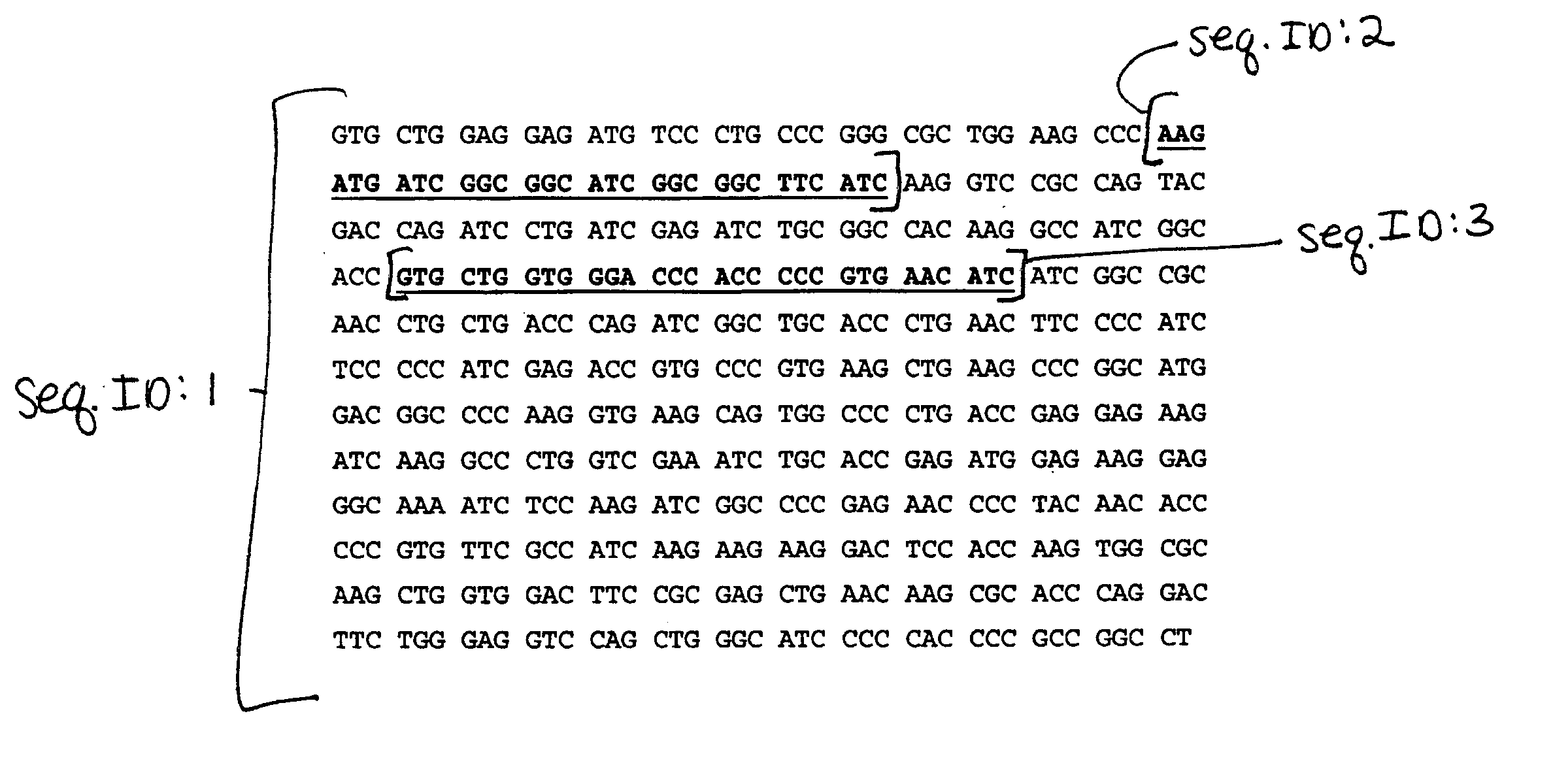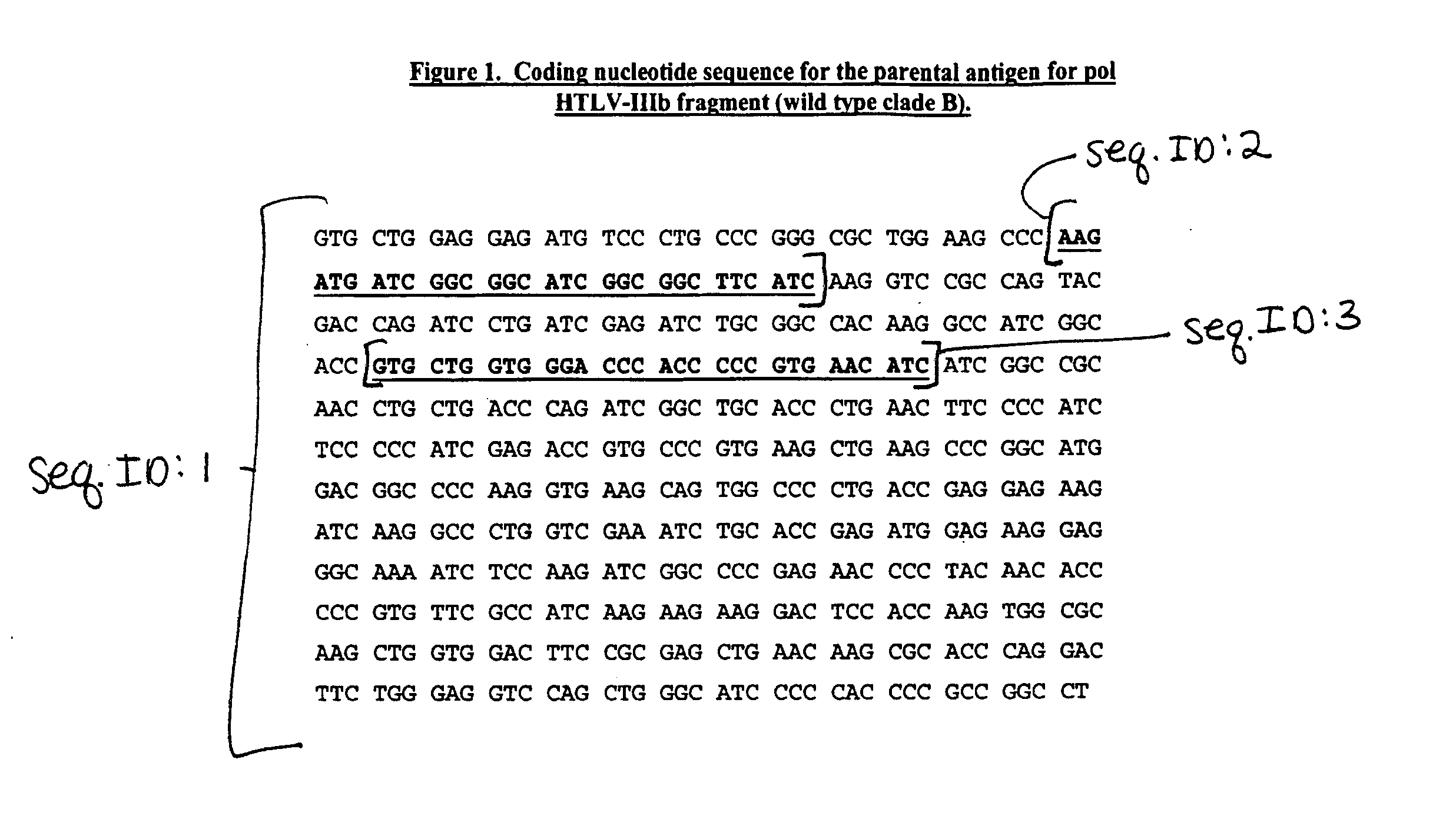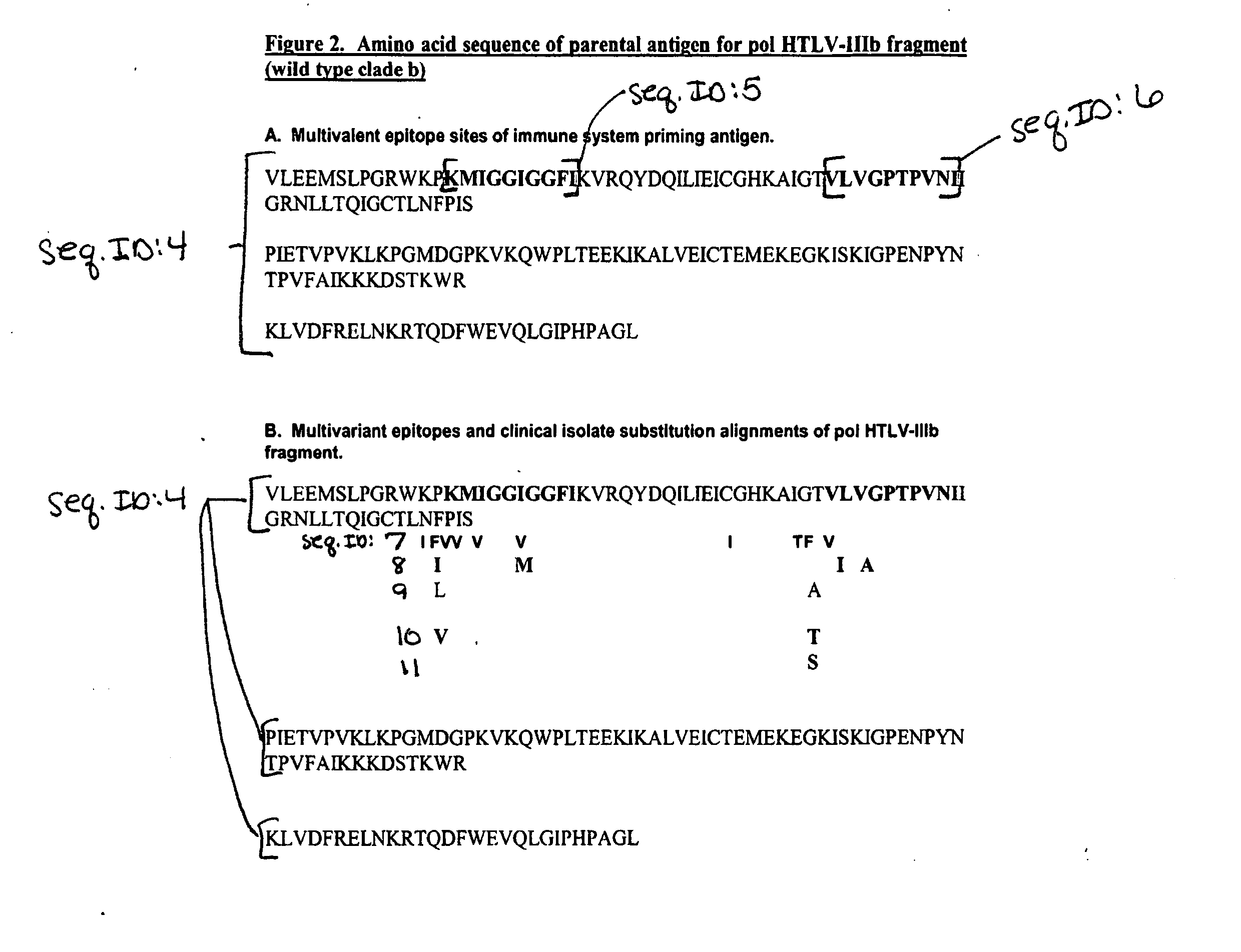DNA-based plasmid formulations and vaccines and prophylactics containing the same
a technology of plasmid formulation and vaccine, applied in the field of vaccines and disease prophylaxis, can solve the problems of difficult development for many pathogens, many bacterial strains once easily treated by conventional antibiotics are now becoming increasingly resistant to treatment, and the effect of improving the immune system
- Summary
- Abstract
- Description
- Claims
- Application Information
AI Technical Summary
Problems solved by technology
Method used
Image
Examples
example i
[0039] The mouse strain BALB / C (H-2d) is used to demonstrate the effect of the hyperpolyvalent vaccination on ct cell response. In brief, thirty mice are divided into three groups of ten animals each. The mice are bred and housed in a pathogen free environment. The three groups are: control group of mice injected only with saline, a group of mice injected with a single plasmid type with the parental sequence, encoding the target epitope and a third group injected with the hypervalent vaccine which is formulated to encode a mixture of sequence types but deliberately not containing the parental epitope. This formulation is used so that any response to the parental epitope is a direct indication of broad specificity of t-cell response. The animals are injected (50 microliters of saline solution) with purified DNA plasmid (vaccine or control) into the Quadriceps and tibialis muscles using a 0.5 cc syringe with a 28-gauge needle. Spleens and blood serum are collected from animals sacrifi...
example ii
[0040]FIG. 7 shows the immunization results based on mutant and wild type HIV immunization. Plasmids encoding the wild type HIV protease and mutants were used for immunization into HLA-A*0201 transgenic mice. Percent CD69+ T cells were quantified using FACS sorting after stimulation of splenocytes with the wild-type epitope. The immune response for wild type and mutants was of similar potency measured for response versus wild type HIV protease, with the best response being for single mutants and a slight decrease with increasing number of mutations, as expected. From the foregoing, it will be observed that numerous variations and modifications may be effected without departing from the true spirit and scope of the novel concepts of the invention.
example iii
[0041]FIG. 8 shows the results of experimental responses versus drug-resistant HIV protease mutants and effect of boosting on immune responses. Transgenic mice (n=5 / vaccine) were genetically immunized with 12.8 μg of plasmid DNA encoding either ELI gag-pol, codon-optimized (═CO)-gag-pol or, wt-gag-pol vaccine or with 0.8 μg of plasmid DNA encoding CO-gag-pol or, wt-gag-pol vaccine plus 12 μg pCMVi plasmid DNA without or with boosting. One (primed only) or two months later (primed and boosted) splenocytes (1×106 / sample) were stimulated for 6 h with irradiated (6000 rads) 10T / 2 stimulator cell lines stably transfected with HLA-A*0201 molecule at responder: stimulator ratio of 10:1 in the presence of indicated peptide (5 μg / ml). Peptides used for stimulation are shown below with mutations in bold (Clade B reference). CD3 / CD8 double positive cells (5-10×104 / sample) were analyzed for intracellular IFN-α production on a FACScan using CellQuest software. Data shown are mean + / − standard de...
PUM
| Property | Measurement | Unit |
|---|---|---|
| nucleic acid | aaaaa | aaaaa |
| polymorphic | aaaaa | aaaaa |
| stable | aaaaa | aaaaa |
Abstract
Description
Claims
Application Information
 Login to View More
Login to View More - R&D
- Intellectual Property
- Life Sciences
- Materials
- Tech Scout
- Unparalleled Data Quality
- Higher Quality Content
- 60% Fewer Hallucinations
Browse by: Latest US Patents, China's latest patents, Technical Efficacy Thesaurus, Application Domain, Technology Topic, Popular Technical Reports.
© 2025 PatSnap. All rights reserved.Legal|Privacy policy|Modern Slavery Act Transparency Statement|Sitemap|About US| Contact US: help@patsnap.com



